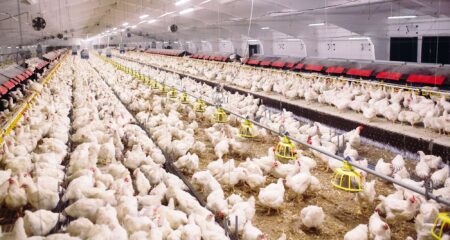If you ever thought about making a marketing plan for your farm, it’s time to make it happen. You can do it! Let’s look at how you can make a plan that works best for your farm.
Every year, I enjoy teaching all the classes for my Kluis Grain Trading Academy, but I have a favorite: Creating a Marking Plan. This class brings together all the concepts we teach during the previous classes.
First, let’s review the basics: Simple is better. Yes, a more complex plan may cover more risks and scenarios. But a simple plan ends up being better, since it’s easier to understand, and easier to act upon.
One example of a simple but effective marketing plan is the “Auto Pilot.” It’s simple to set up and helps you avoid the lows. This plan takes the emotion out of marketing.
Auto Pilot Plans
Auto Pilot Plan Version 1.0
Goal: Make regular sales, but not during the months when prices are historically low.
- Sell 10% of your cash corn and soybeans every month except September and October.
- Sell 10% of your cash wheat each month except July and August.
Likely results: You get close to the year’s average price and avoid selling a large part of your crop at the low.
Auto Pilot Plan Version 2.0
Goal: Make multiple sales but avoid historically low months and sell more during historically high months.
- Sell 20%–22% of your cash corn and soybeans in April, May, and June.
- Sell 10% of your new-crop corn and soybeans ahead on hedges or cash contracts in April, May, and June.
For wheat: Sell 20%–22% of your cash wheat in November, December, and January. Also, sell 10% of your new crop during each of those months.
Likely results: This plan has more risk, but also more potential for a higher average sale price. You are likely to get above the year’s average price in eight out of 10 years.
Note that both plans do not work as well in years when grain prices rally right into harvest. That happens about twice every decade.
These are basic plans. Those I make for my customers are more complex because I am not satisfied with the average price. This involves having price and time targets.
How does that work? First, I study my long-term corn, soybean, and wheat charts to look at patterns, and decide on price targets. Then, I have offers in above the markets at all times to make sales. The goal is to make a series of 10% and 20% cash and new-crop sales as the market rallies.
This marketing year was unusual. We hit a lot of price targets to sell cash and new-crop corn and soybeans in January and February, when futures rallied up to test chart resistance. The time targets to sell in April and June worked, but those sales were below January’s and February’s. The key in our 2024/2025 plan (much like 2023/2024) was to avoid corn and soybean sales during August. For wheat, the forward sales made in November and December of 2024 looked great in 2025. The last cash sales in May and June were at lower prices than the late 2024 sales, but the average price was great.
A variety of plans can work. Sometimes, you just have to find a plan that works with your personality, your operation, and your experience.
| 2024 Kluis Corn Sales (Average=$4.71) | |||
|---|---|---|---|
| Date Sold | Contract | % Sold | Price Sold |
| July 19, 2023 | Dec. 2024 | 10% | $5.42 |
| May 13, 2024 | Dec. 2024 | 10% | $4.93 |
| Sept. 24, 2024 | Dec. 2024 | 10% | $4.18 |
| Dec. 23, 2024 | March 2025 | 10% | $4.48 |
| Jan. 10, 2025 | March 2025 | 10% | $4.67 |
| Jan. 14, 2025 | May 2025 | 10% | $4.87 |
| Jan. 29, 2025 | May 2025 | 20% | $5.08 |
| July 3, 2025 | July 2025 | 20% | $4.34 |
| July 24, 2025 | Sept. 2025 | 20% | $4.02 |
| 2024 Kluis Soybean Sales (Average=$10.75) | |||
|---|---|---|---|
| Date Sold | Contract | % Sold | Price Sold |
| July 19, 2023 | Nov. 2024 | 10% | $12.98 |
| Sept. 23, 2024 | Nov. 2024 | 10% | $10.38 |
| Nov. 8, 2024 | Jan. 2025 | 10% | $10.44 |
| Jan. 10, 2025 | March 2025 | 10% | $10.18 |
| Jan. 13, 2025 | May 2025 | 20% | $10.63 |
| April 14, 2025 | July 2025 | 10% | $10.58 |
| June 18, 2025 | July 2025 | 10% | $10.78 |
| July 3, 2025 | July 2025 | 10% | $10.61 |
| July 24, 2025 | Nov. 2025 | 10% | $10.24 |
September Specifics
Here are two factors to watch in September:
1. The September–December spread.
Watch the price spread between September and December contracts in the corn and wheat markets. As I write this in late July, the December corn contract is trading 21¢ above the expiring September contract. For CBOT wheat, that spread is 20¢. If the December contracts do not drop and fill that continuation gap, then the long-term charts will show a low in September. If the gap is filled, then corn and wheat prices may continue lower into November and December.
For soybeans, I am watching the September–November spread. At this time, the spread is at 19¢. Again, watch to see if the gap is filled. If November drops down to fill the gap, then prices may continue lower into November and December.
2. The spreads out into next summer.
For corn, the December 2025–July 2026 price difference is 34¢ as I write this, and I think it could grow to 38¢ at harvest. When this spread starts to narrow, as it did in 2024, it can signal a major low. For soybeans, I watch the November 2025–July 2026 spread. At this time, it is 58¢, and could grow to 68¢–70¢ at harvest. When the spread starts to narrow, it signals a potential low.
Final Thoughts
If prices were to bottom in September, it would signal an early low. I do not think this is likely, but I will be watching my charts. For farmers with revenue protection crop insurance, it would be best if prices stayed lower through October and then rallied sometime next year. That would allow them to maximize insurance revenue and sell crops in 2026. I think that is a likely scenario.
Large crops bottom out when prices are low enough to stimulate additional demand. Then, the market can turn higher. That is why storing a large crop usually pays big dividends. I think it will play out that way in the 2025/2026 marketing year, just as it did last year.
Remember: You are growing money, not crops. If you struggle with making marketing decisions, then make sure you learn more about the process this winter. If not you, then find someone else on your farm team who can take on that role.
Note: The risk of loss in trading futures and/or options is substantial, and each investor and/or trader must consider whether this is a suitable investment. Past performance — whether actual or indicated by simulated historical tests of strategies — is not indicative of future results. Trading advice reflects good-faith judgment at a specific time and is subject to change without notice. There is no guarantee that the advice given will result in profitable trades.


:max_bytes(150000):strip_icc()/SuccessfulFarmingShareImage-8fed6410b43147a19ed5ea1e3243227f.png)

:max_bytes(150000):strip_icc()/IMG_7575-ac6db3006a2145109bcc2df421c7a962.jpeg)


:max_bytes(150000):strip_icc()/101088351_corn-6e630ca8c4d0405c8494114b107e18bb.jpg)


:max_bytes(150000):strip_icc()/Markets-3-Corn-up-3-19bdbeee0041452db8bce0a0f1c8b883.jpeg)
